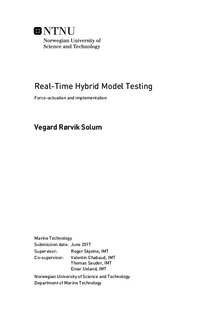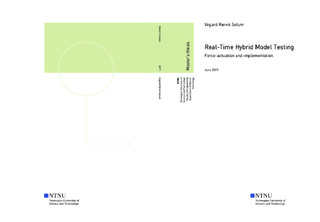| dc.description.abstract | To be able to understand the behaviour of complex mechanical systems, physical testing has been - and still is - of importance. Sophisticated models and numerical tools have been developed to analyze the dynamics of such systems, but still some physical phenomena are not yet fully understood. These uncertain phenomena must be studied by physical testing - usually in model scale. However, physical testing also has its limitations. Difficulties due to scaling effects or restrictions of the testing facilities can be mentioned. Real-time hybrid testing is a name given to testing methods that combine physical tests in model scale, with numerical simulations of a system part. The concept has the potential of enhancing convenience and reducing cost. Real-time hybrid testing is based on dividing complex structures into two system parts: one that is physically tested and one that is simulated numerically. The two system parts interact in real time through a network of sensors, computations and actuators. The idea is to establish a system emulation that exploits the advantages of numerical simulations, while still capturing the most uncertain physical phenomena by physical tests.
The thesis presents the design of a force-actuation system for use in real-time hybrid testing. The system will be used to actuate the response of a numerical substructure on a physical substructure in an emulation of a coupled mass-spring-damper system. The force-actuation system consists of a position-controlled DC-servomotor in combination with a compliant element, a wheel and a wire. When trying to control forces on a moving object, different challenges arise. The thesis aims at clarifying some of these challenges. It is observed that time delays introduce extra damping to the system, and a compensation method based on polynomial prediction is proposed and analyzed. Performance of the force-actuation system is improved by the use of a predictor, but it does not eliminate the problem entirely. With limited performance of the force-actuator, it will be difficult to establish a valid real-time hybrid test since some frequencies are not reconstructed properly in the test. | |

